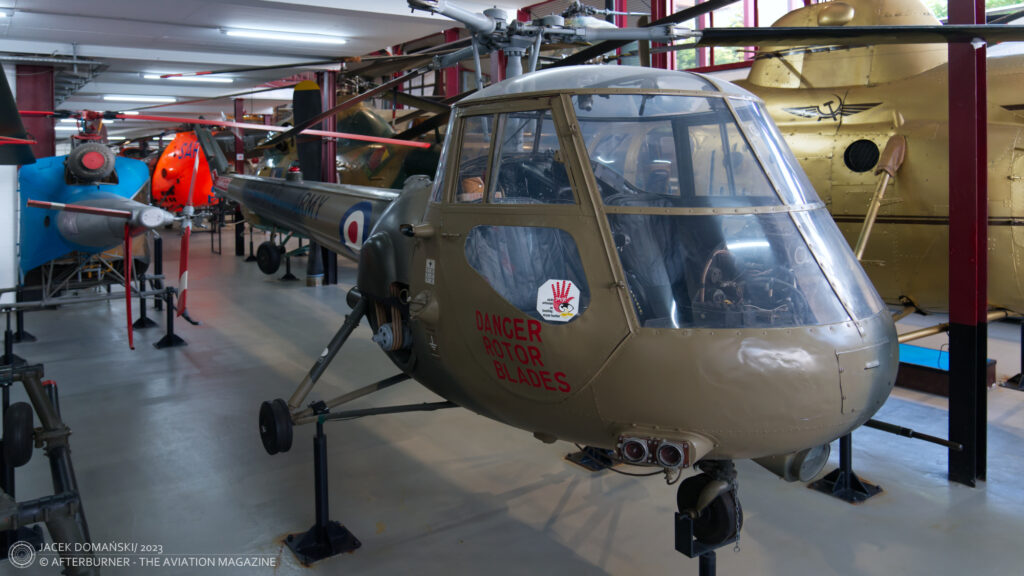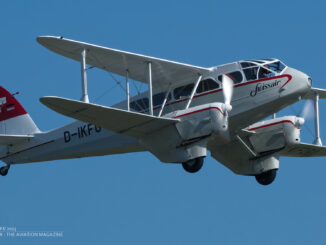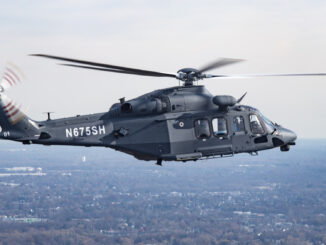 Saunders-Roe Skeeter AOP.12 (c/n S2/7154, formerly XN348 of the Army Air Corps, UK), exhibited at Hubschraubermuseum Bückeburg (Bückeburg Helicopter Museum), June 2023.
Saunders-Roe Skeeter AOP.12 (c/n S2/7154, formerly XN348 of the Army Air Corps, UK), exhibited at Hubschraubermuseum Bückeburg (Bückeburg Helicopter Museum), June 2023.
History of that small helicopter can be said to begin with Juan de la Cierva, the Spanish engineer and rotorcraft designer, and his early autogyro designs. In 1926, together with a successful Scottish industrialist James George Weir and his financial support, de la Cierva established Cierva Autogiro Company that was focused on development of his aviation projects.
In December of 1936, de la Cierva was killed in an aviation accident. Nevertheless, the company continued with development of his designs, now led by the new Chief Technical Officer, J.A.J. Bennet.
In 1947, Cierva Autogiro Company opened a new project of small, two-seat helicopter that could be used by both military and civilian operators, designated W.14 Skeeter. On 10th October 1948, the new rotorcraft performed its maiden flight, powered by a single 110 hp Jameson FF-1 engine.
Initial flights proved that the Skeeter prototype was underpowered. Therefore, it was redeveloped into Mk 2 variant – much bigger helicopter equipped with 145 hp de Havilland Gipsy Major 10 powerplant. The new rotorcraft made its first flight on 20th October 1949. This time it was found that the helicopter suffers from ground resonance issue and was destroyed during testing in June of the next year.
Nevertheless – and despite the crash and ground resonance issue – the Cierva company managed to sign a contract with the British Ministry of Supply for development of two improved variants of the Skeeter, intended for testing with the Royal Air Force and the Royal Navy, designated Mk 3 and Mk 4, respectively.
However, Cierva Autogiro Company did not complete any of the ordered helicopters. On 13th June 1950, prototype of the then biggest rotorcraft in the world, Cierva W.11 Air Horse, crashed. The accident claimed lives of all three persons on board – S/L Alan Marsh (Cierva chief test pilot), S/L John Cable (Ministry of Supply test pilot) and Joseph Unsworth (flight engineer). That tragic event made J.G. Weir to abandon any further rotorcraft development and to cease activities of the company. In January of the next year, Cierva Autogiro Company and all its projects were taken over by Saunders-Roe Limited.
Initially, the Saunders-Roe company stopped any further works on the Skeeter project. It was dusted off only in March of 1953, when the British Army was looking for a small helicopter for aerial observation and direction of artillery fire duties. A quick competition was held, with participation of Fairey Aviation, Bristol Aeroplane, Percival Aircraft, Short and Saunders-Roe.
The competition was won by Fairey that received an order to build four prototypes of its Ultra-light Helicopter. In addition, it turned out that problems with the Skeeter ground resonance were still not solved.
As a result, Saunders-Roe focused on developing another variant of the helicopter, equipped with completely redesigned undercarriage and modernized main rotor. The rotorcraft, designated Mk 5, was then submitted for the British aviation authorities for further testing that proved the ground resonance issue was finally solved. In consequence, the British Army revised its previous position and ordered four examples of the Skeeter for evaluation purposes. Although, they had to be equipped with even more powerful engine, Gipsy Major 200, generating 200 hp. That new variant was known as Mk 6 or AOP.10 (air observation post) by its Army designation.
In the meantime, the re-established German Armed Forces (Bundeswehr) directed an inquiry to the British authorities, asking for a light helicopter suitable for both the German ground and naval forces. That export opportunity was another reason to boost the development of the Skeeter.
The final variant of the helicopter was ready in 1956. It was designated Skeeter AOP.12 and powered by de Havilland Gipsy Major engine, generating 215 hp. Shortly after, the British Army placed its final order for sixty-four rotorcraft of that type. Bundeswehr ordered six helicopters for the army (designated Skeeter Mk 50) and further four for the navy (Mk 51).
The British Skeeters remained in active service until 1967, used by the Army Air Corps and the RAF training centres. Germany operated them until 1961, when all its helicopters of that type were sold to Portugal. However, they never entered active service with the Portuguese Air Force, remaining in storage until the end of the 1960s.
Currently, there are no airworthy examples of the Skeeter. About ten AOP.12 rotorcraft are preserved in British aviation museums and another two are exhibited in Poland and Germany. Historic Army Aircraft Flight in the United Kingdom is currently owning the Skeeter XL812 and hopes to restore the helicopter to flying condition one day in the future.



